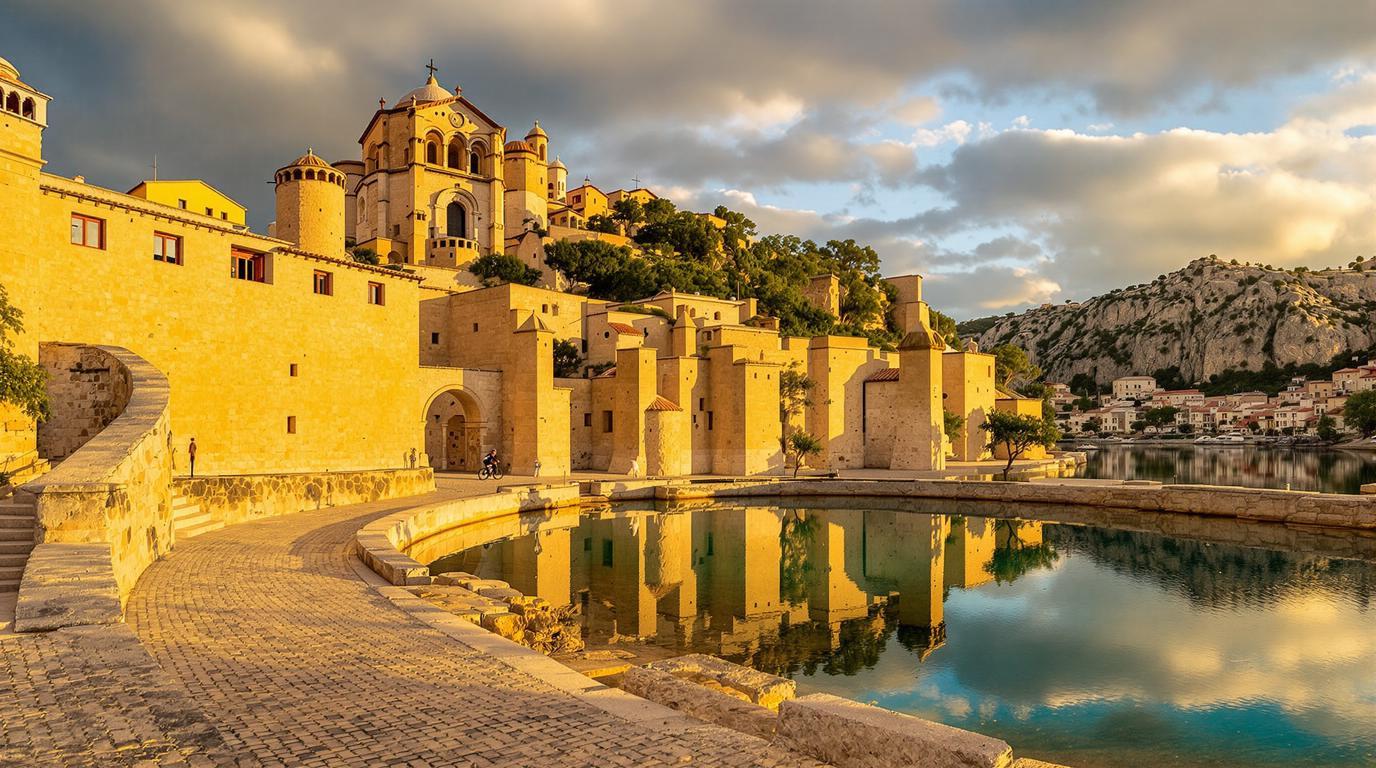While tourists flock to Barcelona and Madrid, a serene gem lies quietly in Spain’s northeastern countryside. Montgai, a picturesque municipality in Lleida province, preserves centuries of Catalan heritage amid rolling landscapes that barely register on most travelers’ radars. This hidden corner of Catalonia offers something increasingly rare in our hyper-connected world: authentic experiences untouched by mass tourism.
A landscape that whispers stories
Sant Llorenç de Montgai, Montgai’s most enchanting village, sits nestled among gentle hills where the Mediterranean sunlight bathes golden stone buildings. The nearby reservoir reflects the azure sky, creating a postcard-perfect scene that rivals more famous Spanish destinations.
“Our village represents the true soul of Catalonia,” explains Maria Gomez, a local olive farmer. “Visitors who find us are always surprised by the tranquility and beauty that exists just a short distance from Lleida city.”
Historical treasures hidden in plain sight
The Ermita de la Mare de Déu del Castell de Llorenç de Montgai stands as a testament to the region’s rich history. This medieval chapel, with its humble stone walls and commanding views, offers visitors a glimpse into centuries past when this land was contested by different kingdoms.
History buffs seeking alternatives to crowded tourist sites will find similar medieval treasures in nearby French Catalonia, creating an opportunity for a cross-border historical journey.
A paradise for outdoor enthusiasts
The Pantà de Sant Llorenç de Montgai reservoir serves as the region’s aquatic playground. Kayakers glide across mirror-like waters while hikers explore trails that wind around limestone cliffs. The moderate climate makes outdoor activities pleasant year-round, unlike Spain’s desert landscapes and misty forests farther south.
Local outfitters offer guided eBike tours that allow visitors to cover more ground while enjoying the serenity of the countryside. These electric-assisted bicycles make the rolling terrain accessible to travelers of varied fitness levels.
Where time moves differently
Montgai epitomizes slow travel – that increasingly precious opportunity to experience a destination deeply rather than checking items off a list. Village squares fill with locals in animated conversation while café patrons linger over coffee well into the afternoon.
“We measure time differently here,” says Josep Ferrer, owner of a family-run restaurant. “Visitors often tell me they’ve forgotten what day it is after just two days in our village.”
This unhurried atmosphere recalls the timeless quality of Corsican villages, where traditions remain vibrant despite modernization elsewhere.
Culinary secrets worth discovering
The Lleida region’s traditional Catalan cuisine shines in Montgai’s unpretentious restaurants. Hearty escalivada (roasted vegetables) and rich suquet de peix (fisherman’s stew) offer authentic flavors that haven’t been modified for tourist palates.
Local olive oils and wines from nearby vineyards provide edible souvenirs that capture the essence of this sun-drenched landscape. Unlike America’s Monument Valley with its Hollywood fame, Montgai’s treasures remain largely undiscovered.
A photographer’s dream at golden hour
The quality of light in Montgai deserves special mention. During the golden hour, the honey-colored stone buildings glow with an almost ethereal warmth. Amateur photographers will find endless compositions as shadows lengthen across ancient walls and terraced landscapes.
This magical light rivals even Scotland’s island sanctuaries for creating atmospheric images that capture a sense of place.
How to experience Montgai authentically
While public transportation options exist (buses from Lleida run several times daily), renting a car provides the freedom to explore at your own pace. Local accommodations range from rustic guesthouses to renovated farmhouses that offer immersive experiences in rural Catalan life.
Montgai rewards travelers who seek the extraordinary in seemingly ordinary places. Here, among these serene hills and ancient stones, you’ll discover a Spain that exists beyond the guidebooks – authentic, unhurried, and profoundly beautiful.
